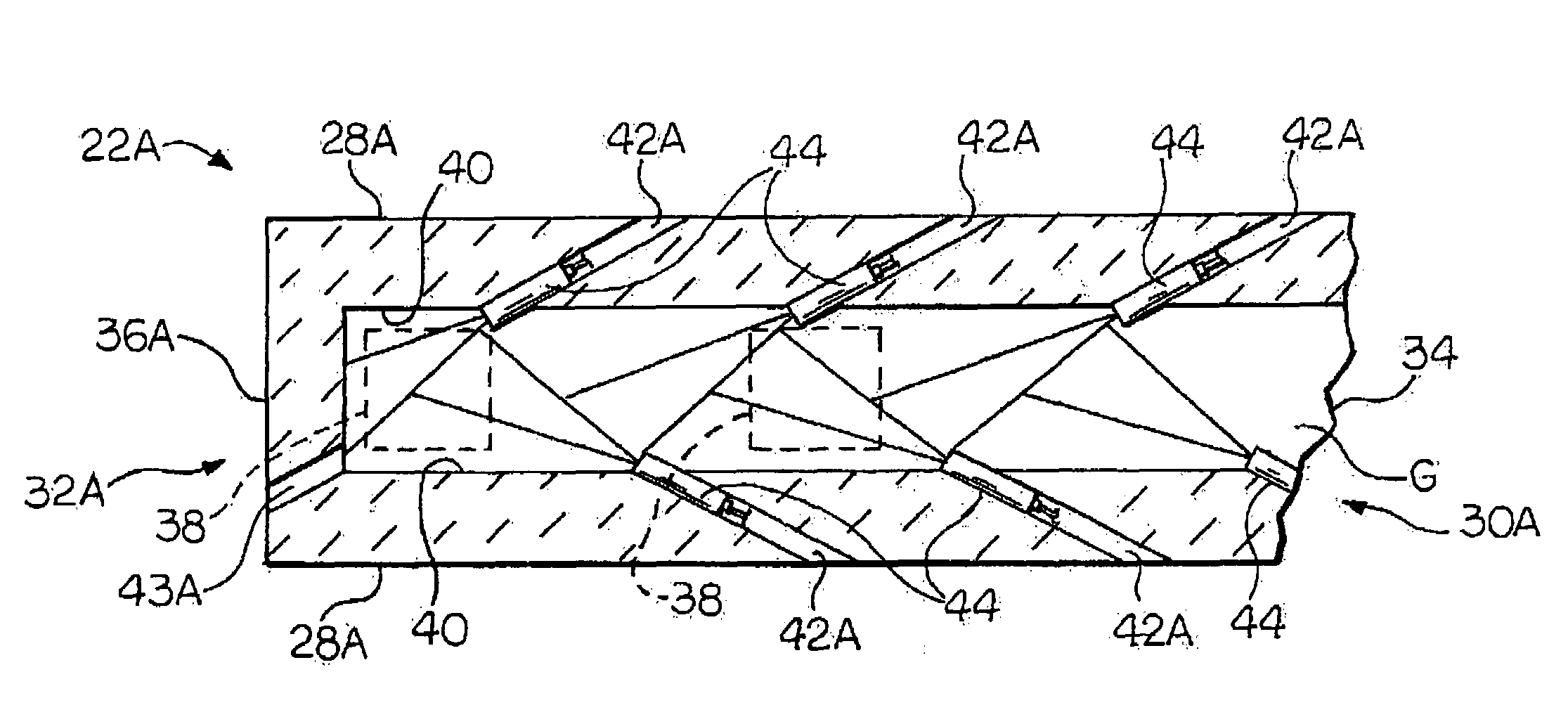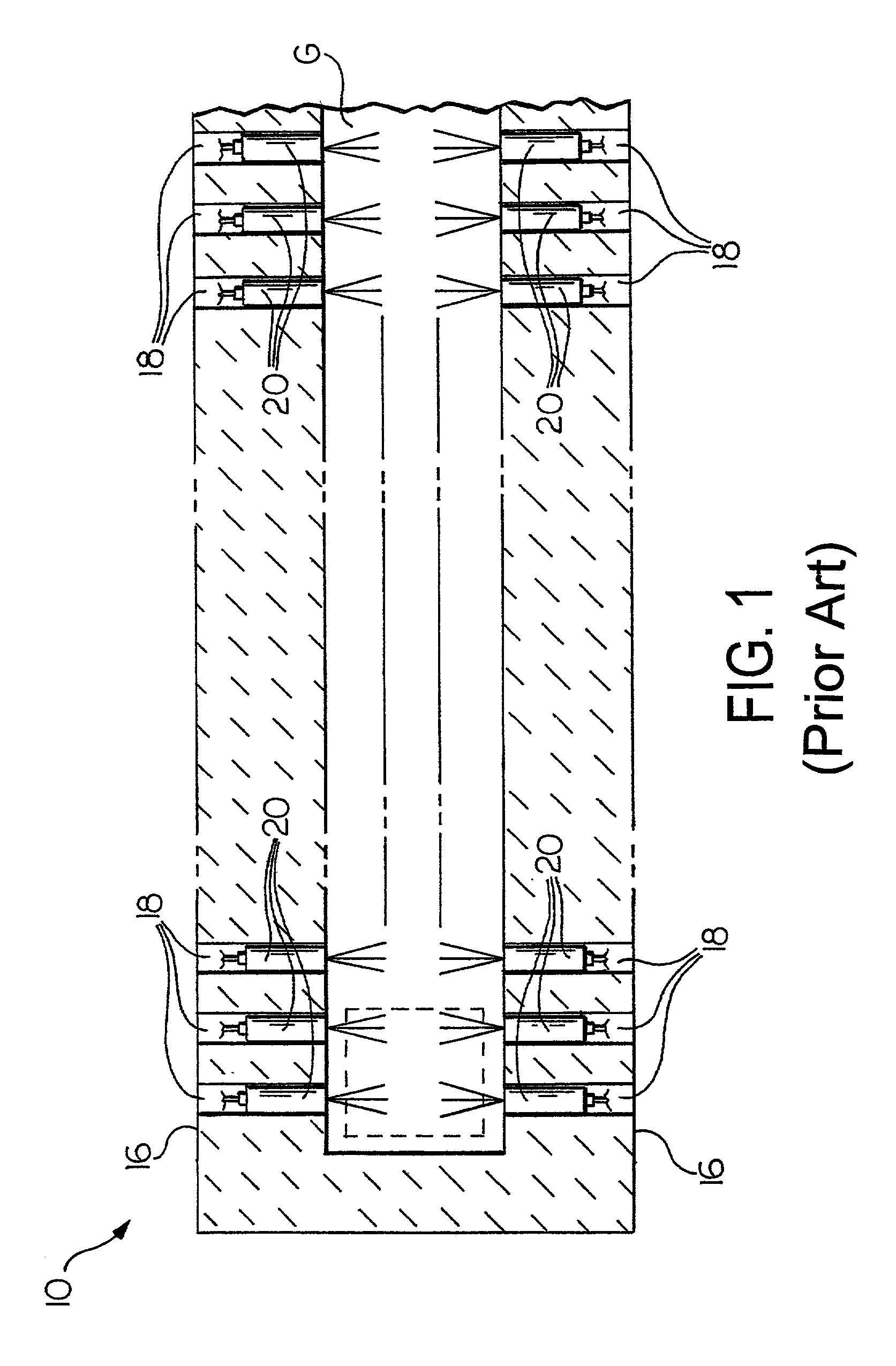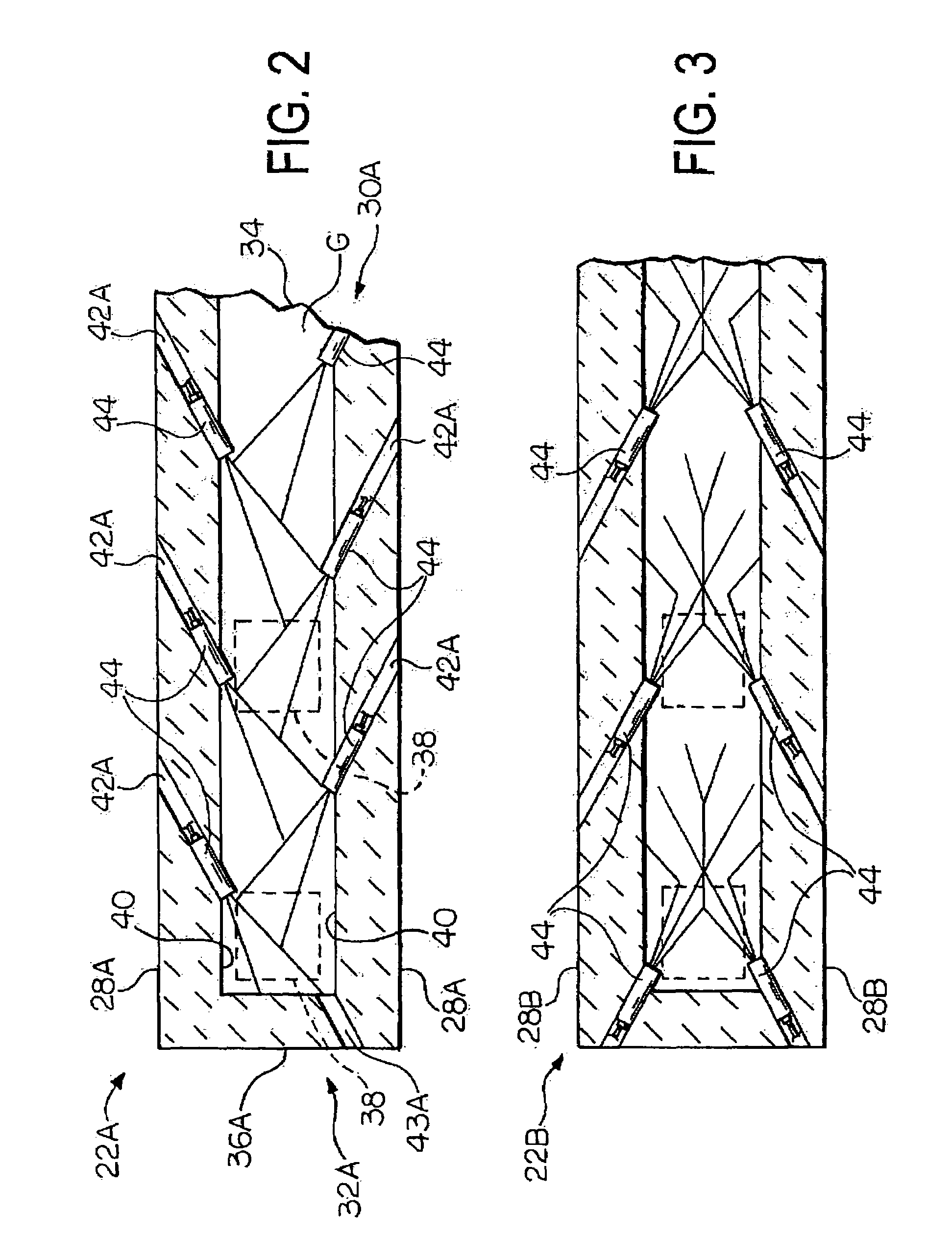Oxygen-fired front end for glass forming operation
a technology of oxygen-fired front end and glass forming operation, which is applied in glass tempering apparatus, furnaces, lighting and heating apparatus, etc., can solve the problems of low combustion efficiency inefficient operation, and high construction cost of air-gas mixture firing system
- Summary
- Abstract
- Description
- Claims
- Application Information
AI Technical Summary
Problems solved by technology
Method used
Image
Examples
Embodiment Construction
[0022]Referring now to the drawings, there is illustrated in FIG. 2 a front end of a glass forming operation. The front end comprises an open channel and a forehearth downstream of the open channel. To simplify the description, the channel and forehearth will be cooperatively described as a channel 22A. The channel 22A is adapted to deliver molten substance (e.g., molten glass G) from a melter to a point of production (i.e., a forming position). Neither the melter nor the forming position is shown.
[0023]Molten glass G does not contact an upper portion of the channel 22A. That is to say, an upper portion of the channel 22A is above the molten glass level (i.e., the molten glass level L shown in FIGS. 4 and 5). Consequently, this portion can be constructed from relatively inexpensive refractory material (i.e., a super structure refractory material, such as silica, mullite, or other materials that are not required to withstand corrosive effects of molten glass G).
[0024]A lower portion ...
PUM
| Property | Measurement | Unit |
|---|---|---|
| Temperature | aaaaa | aaaaa |
| Angle | aaaaa | aaaaa |
| Angle | aaaaa | aaaaa |
Abstract
Description
Claims
Application Information
 Login to View More
Login to View More - R&D
- Intellectual Property
- Life Sciences
- Materials
- Tech Scout
- Unparalleled Data Quality
- Higher Quality Content
- 60% Fewer Hallucinations
Browse by: Latest US Patents, China's latest patents, Technical Efficacy Thesaurus, Application Domain, Technology Topic, Popular Technical Reports.
© 2025 PatSnap. All rights reserved.Legal|Privacy policy|Modern Slavery Act Transparency Statement|Sitemap|About US| Contact US: help@patsnap.com



